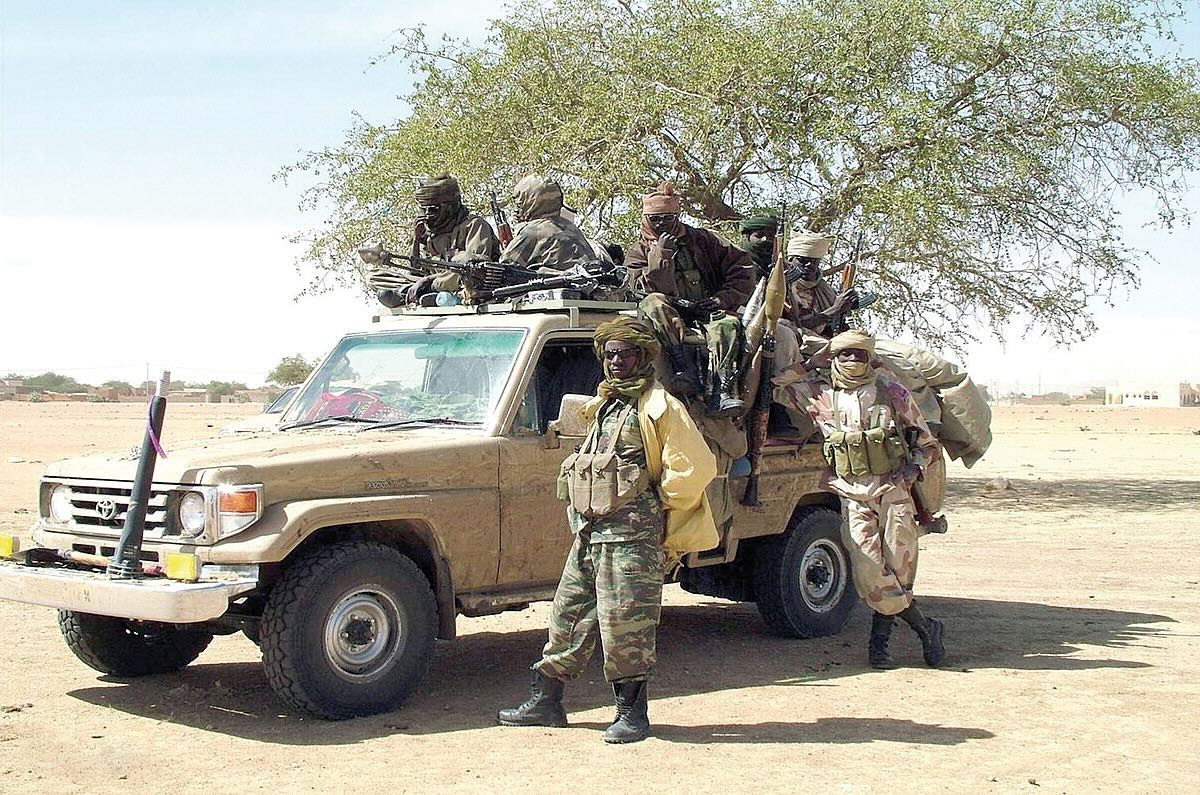
The Chadian–Libyan War was a complex conflict that spanned from 1978 to 1987, involving Chad and Libya. This war was not just a battle over borders but also a struggle for regional influence and control. Libya, under Muammar Gaddafi, sought to expand its territory and influence in Chad, leading to multiple military confrontations. Chad, with support from France and the United States, resisted these incursions fiercely. The conflict saw the use of advanced weaponry, including tanks and aircraft, and involved various Chadian factions. Understanding this war provides insight into the geopolitical dynamics of North Africa during the Cold War era. Here are 30 facts that shed light on this significant yet often overlooked conflict.
Key Takeaways:
- The Chadian-Libyan War was a complex conflict involving territorial disputes, international interventions, and guerrilla tactics. It highlighted the importance of diplomacy, regional cooperation, and the impact of war on civilians.
- The war's resolution involved diplomatic efforts and changes in leadership, with lasting effects on both countries. It also emphasized the need for international mediation, guerrilla tactics, and regional cooperation in addressing security threats.
Origins of the Chadian–Libyan War
The Chadian–Libyan War was a complex conflict that spanned several decades. It involved territorial disputes, political power struggles, and international interventions.
- The war began in 1978 when Libya invaded northern Chad.
- Libya's leader, Muammar Gaddafi, aimed to annex the Aouzou Strip, a mineral-rich region.
- Chad's internal political instability made it vulnerable to external aggression.
- France, a former colonial power in Chad, played a significant role in supporting the Chadian government.
- The conflict was part of the larger Cold War dynamics, with the U.S. and Soviet Union indirectly involved.
Key Battles and Military Strategies
Several key battles and military strategies defined the course of the Chadian–Libyan War. These engagements often involved both conventional and guerrilla warfare tactics.
- The Battle of Faya-Largeau in 1983 was a significant turning point, with Chadian forces recapturing the town from Libyan control.
- Operation Manta, launched by France in 1983, aimed to halt Libyan advances in Chad.
- The Toyota War in 1987 saw Chadian forces using Toyota pickup trucks for rapid, mobile warfare.
- Chadian President Hissène Habré employed guerrilla tactics to counter the better-equipped Libyan forces.
- Libyan forces often relied on air superiority and heavy armor, but struggled with the harsh desert terrain.
International Involvement and Diplomacy
The Chadian–Libyan War attracted international attention and intervention. Various countries and organizations played roles in mediating and influencing the conflict.
- The Organization of African Unity (OAU) attempted to mediate peace talks between Chad and Libya.
- The United Nations imposed sanctions on Libya for its aggressive actions in Chad.
- The U.S. provided covert support to Chadian forces through the CIA.
- France's Operation Epervier in 1986 reinforced its military presence in Chad.
- The conflict strained Libya's relations with neighboring African countries.
Humanitarian Impact and Casualties
Wars inevitably bring suffering to civilians, and the Chadian–Libyan War was no exception. The humanitarian impact was severe, with many lives lost and communities displaced.
- Thousands of Chadian civilians were displaced due to the fighting.
- Landmines left behind by both sides caused casualties long after the conflict ended.
- The war disrupted agricultural activities, leading to food shortages in Chad.
- Human rights abuses, including torture and extrajudicial killings, were reported on both sides.
- The conflict left many children orphaned and communities devastated.
Resolution and Aftermath
The Chadian–Libyan War eventually came to an end, but its effects lingered for years. The resolution involved diplomatic efforts and changes in leadership.
- The war officially ended in 1987 with a ceasefire agreement.
- The Aouzou Strip was formally recognized as part of Chad in a 1994 International Court of Justice ruling.
- Hissène Habré was overthrown in 1990, leading to a change in Chad's leadership.
- Libya's involvement in Chad diminished after Gaddafi faced internal challenges.
- The conflict influenced future African peacekeeping and conflict resolution efforts.
Legacy and Lessons Learned
The Chadian–Libyan War left a lasting legacy on both countries and the broader region. It also provided important lessons for future conflicts.
- The war highlighted the importance of international mediation in resolving conflicts.
- It demonstrated the effectiveness of guerrilla tactics against conventional military forces.
- The conflict underscored the need for regional cooperation in addressing security threats.
- The war's aftermath led to increased efforts to clear landmines and assist affected communities.
- The Chadian–Libyan War remains a significant chapter in African history, shaping the political landscape of both nations.
Final Glimpse at the Chadian–Libyan War
The Chadian–Libyan War left a lasting mark on both nations. This conflict, spanning from 1978 to 1987, saw Chad and Libya clash over territorial disputes and political influence. The war's impact was profound, reshaping regional dynamics and international relations. Libya's ambitions under Muammar Gaddafi faced fierce resistance from Chadian forces, supported by France and the United States. The conflict highlighted the complexities of Cold War geopolitics in Africa.
The war ended with the Libyan withdrawal and a ceasefire in 1987, but the scars remained. The Aouzou Strip dispute continued until 1994 when the International Court of Justice ruled in favor of Chad. This war serves as a reminder of the enduring consequences of territorial ambitions and the resilience of nations defending their sovereignty. Understanding this conflict helps us appreciate the intricate web of history shaping today's world.
Frequently Asked Questions
Was this page helpful?
Our commitment to delivering trustworthy and engaging content is at the heart of what we do. Each fact on our site is contributed by real users like you, bringing a wealth of diverse insights and information. To ensure the highest standards of accuracy and reliability, our dedicated editors meticulously review each submission. This process guarantees that the facts we share are not only fascinating but also credible. Trust in our commitment to quality and authenticity as you explore and learn with us.
